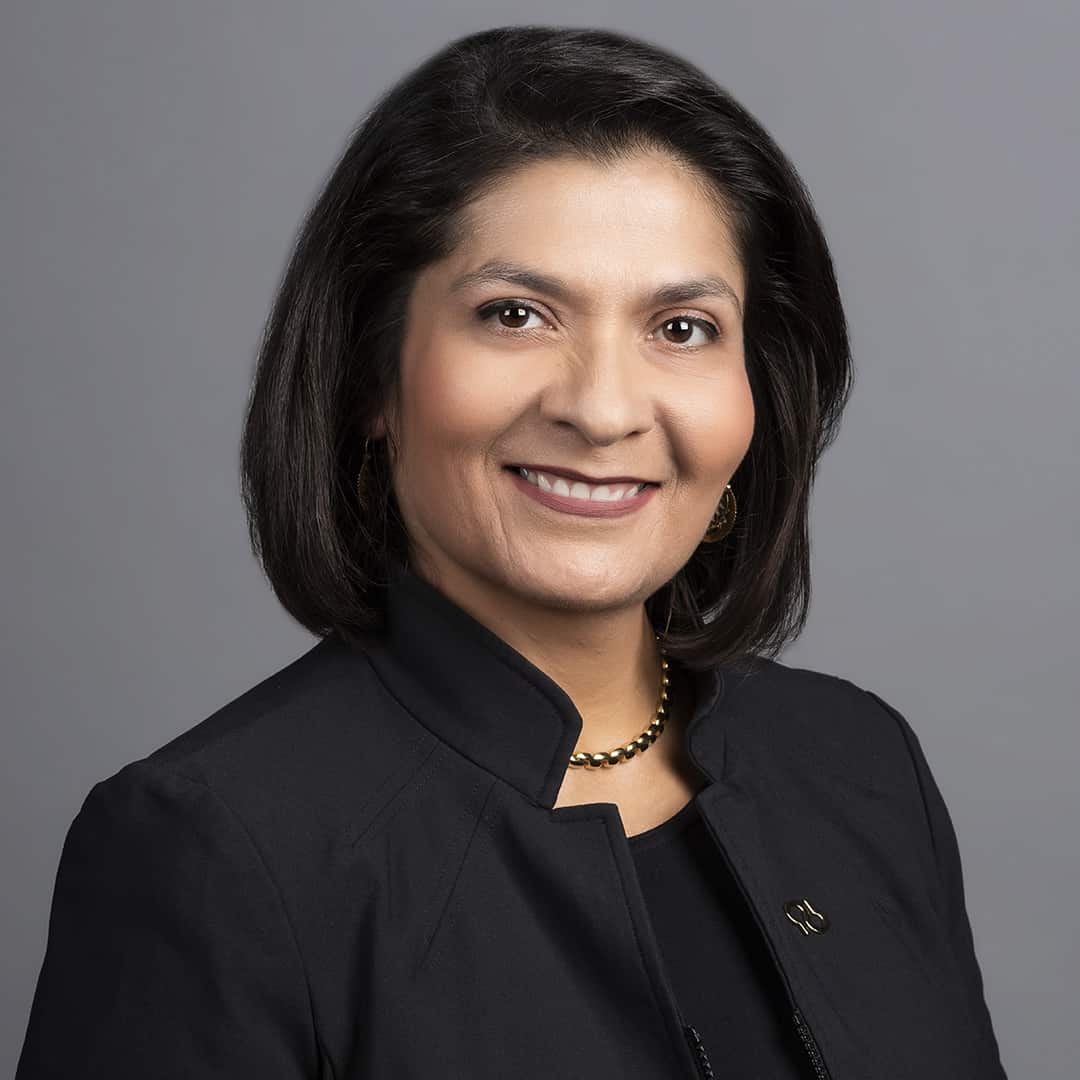
Maria Carrillo has always been interested in the scientific study of the brain. “It’s the most complex organ in the human body,” she explains. While pursuing her neuroscience doctorate degree at Northwestern University, she worked with people with Parkinson’s and Alzheimer’s diseases—the latter of which became the focus of her career.
Today, Carrillo is the chief science officer of the Alzheimer’s Association. She feels fortunate to work for an organization with a vision she wholeheartedly embraces: a world without Alzheimer’s disease. “My family has been touched with the devastation of watching my husband’s parents experience Alzheimer’s and vascular dementia,” Carrillo says. “Since my late mother-in-law was diagnosed, this vision of a world without Alzheimer’s had a new meaning and a new reality, because it now affects my husband and my children.”
The vision has become a personal mission for Carrillo and motivates her to accelerate research by connecting scientists around the globe whom she describes as “tireless in their efforts to find treatments and prevention for this cruel disease.”
She is currently leading a two-year clinical trial called the US POINTER Study, which is an abbreviation of the US Study to Protect Brain Health Through Lifestyle Intervention to Reduce Risk. Funded initially by the Alzheimer’s Association, the clinical trial is particularly focused on studying diverse populations in multiple locations around the country.
“Since my late mother-in-law was diagnosed, this vision of a world without Alzheimer’s had a new meaning and a new reality, because it now affects my husband and my children.”
“From our 2019 Facts and Figures Report, we know that more women than men have Alzheimer’s or other dementias,” Carrillo says. “Almost two-thirds of Americans with Alzheimer’s are women. We also know Hispanics are about one-and-a-half-times as likely to develop Alzheimer’s and other dementias than older whites, and there are also differences within the Latino populations. The reasons why are mainly related to an increase in cardiovascular risk factors, which are modifiable.”
By “modifiable,” Carrillo means that she believes people can decrease their likelihood of developing Alzheimer’s through what she calls “lifestyle interventions.”
“We want to scientifically test whether lifestyle interventions such as physical exercise, diet and nutrition, keeping your brain challenged by learning new things and being socially stimulated, and taking care of your overall health, such as controlling your blood pressure, might prevent or at least delay the onset of cognitive decline.”
Carrillo stresses the importance of participation in clinical trials among the Hispanic community through programs like the Alzheimer’s Association TrialMatch. “We need to study more diverse populations to see how the disease affects various people,” she says. “Right now, most of the available research is on study participants who are white and have northern European ancestry. That doesn’t always translate well to other populations.”
In addition to helping the Latino community through her disease research and prevention efforts, Carrillo is also a strong advocate for encouraging more people of color to pursue careers in science. She is particularly interested in people of color becoming the future leaders of research teams, both in academia and private industry, where she says more representation of diverse populations and diverse backgrounds is needed.
Her advice to those future leaders? “You can do anything, persistence is key!” she says. These words are similar to the advice that her father has given her, which continues to inspire her today: “Everything you do, do it better than everyone else. Put 150 percent into what you do.”
Photo: courtesy of Alzheimer’s Association

